
DHINO
ZZV05536 rev. 0
Tragen von PSA und die Vorbereitung von Sicherheitssystemen verlangen, deren Bestandteile die
PSA sind. Der Anwender ist verpflichtet, diese Gesetze zu kennen, die andere Grenzwerte als die
vorsehen können, die in diesen Anleitungen zu finden sind.
6 – GARANTIE
Der Hersteller garantiert die Konformität der Ausrüstung mit den zum Zeitpunkt der Herstellung
geltenden einschlägigen Auflagen. Die Mängelgarantie ist auf die Fabrikationsfehler und
Rohstoffmängel begrenzt: Sie umfasst nicht den normalen Verschleiß, Rosten, Schäden durch
unsachgemäßen Gebrauch bzw. Verwendung bei Wettkämpfen, durch unsachgemäße
Instandhaltung, Transport, Aufbewahrung oder Lagerung usw.. Die Garantie verfällt bei Änderungen
oder Manipulationen der Ausrüstung. Die Gültigkeit entspricht der gesetzlichen Garantie des Landes,
in dem die Ausrüstung verkauft wird, ab dem Verkaufsdatum durch den Hersteller. Nach dieser Frist
können gegenüber dem Hersteller keinerlei Ansprüche geltend gemacht werden. Jede Anfrage für
eine Reparatur oder das Auswechseln unter Garantie muss mit dem Kaufbeleg versehen sein. Wenn
der Defekt anerkannt wird, dann verpflichtet sich der Hersteller zur Reparatur oder nach ihrem
Dafürhalten zum Auswechseln oder zur Geldrückgabe der Ausrüstung. Die Haftung des Herstellers
geht in keinem Fall über den Rechnungspreis der Ausrüstung hinaus.
7 – SPEZIFISCHE INFORMATIONEN
Die Eispickel “DHINO” in den Versionen 886.000 “DHINO LIGHT”, 8A1.000 "DHINO ALPINE und
8A2.000 “DHINO CLASSIC” sind Pickel nach EN und insbesondere für das 13089:11/A1:15
klassische Bergsteigen und das Skibergsteigen geeignet. Achtung: sie sind nicht für Klettern im
Gletscherbruch geeignet.
Abb. 1 – Teile des Pickels: A: Haue aus Kohlenstoffstahl, A1: Haue aus Aluminiumlegierung - B:
Schaufel aus Kohlenstoffstahl, B1: Schaufel aus Aluminiumlegierung - C: Schaft aus
Aluminiumlegierung - D: Pickelspitze aus Kohlenstoffstahl, D1 – Pickelspitze aus Aluminiumlegierung,
E: Schlaufe aus Polyamid (Zubehör für Version light).
Abb. 2 – Um den Pickel herauszuziehen, den Schaft senkrecht zur Wand ziehen und drücken.
Achtung: niemals die Seitenbewegungen (rechts – links) erzwingen.
Abb. 3 – Richtiger Anschlag mit vertikalem Pickel: Die Schlaufe muss unter dem Schnee sein und der
Schaft komplett eingesteckt. Achtung: Diese Art des Anschlags garantiert nicht die maximale
Sicherheit.
Abb. 4 – Richtiger Anschlag des Pickels als “toter Mann”: Der Pickel muss waagrecht und tief im
Schnee vergraben werden. Der Kopf muss eingeschlagen sein und die Schlaufe muss sich etwa 1/3
der Schaftlänge vom Kopf entfernt befinden.
Abb. 5 – Haue und Spitze mit einer Eisenfeile schärfen. Wichtig: Niemals eine Schleifscheibe
verwenden.
8 – KONTROLLEN VOR UND NACH DEM GEBRAUCH
Sicherstellen, dass das Gerät für den vorgesehenen Gebrauch geeignet ist und vor und nach jedem
Einsatz Folgendes prüfen:
- Teile aus Metall und Kunststoff:
. dass sie keine mechanischen Verformungen erlitten haben,
. dass sie keine Anzeichen von Rissen oder gebrochenen Verbindungsstellen
aufweisen,
. dass sie kein Spiel an den Verbindungsstellen aufweisen,
- dass die Schlaufe nicht verschlissen ist und dass die Nähte keine durchtrennten oder
lockeren Fäden aufweisen.
ES ----------------------------------------------------------------------------------------------------------------
-------------
1 - INFORMACIÓN GENERAL
A) La información proporcionada por el fabricante (en adelante información) debe ser
leída y comprendida correctamente por parte del usuario antes de emplear el
dispositivo. Atención: la información abarca la descripción de las características, de las
prestaciones, del montaje, del desmontaje, del mantenimiento, de la conservación, de la
desinfección, etc. del dispositivo y, aunque contiene algunas sugerencias de empleo, no debe
considerarse un manual de uso en las situaciones reales (de la misma forma que un manual de uso y
mantenimiento de un coche no enseña a conducir dicho vehículo ni puede sustituir una autoescuela).
Atención: la escalada en roca y hielo, los descensos, la vía ferrata, la espeleología, el esquí-
alpinismo, el barranquismo, la exploración, el socorrismo, el arborismo y los trabajos en alturas son
todas actividades de alto riesgo y pueden comportar accidentes incluso mortales. El usuario es
responsable de todos los riesgos derivados de la práctica de dichas actividades y del uso de cada
nuestro dispositivo.
Este dispositivo ha de ser usado solamente por personas formadas (informadas y preparadas) para
el uso y sometidas al control directo de formadores/supervisores que garanticen la seguridad.
B) Antes y después del uso, el usuario ha de efectuar todos los controles descritos en la información
específica y, en especial, asegurarse de que el dispositivo:
- se encuentre en condiciones óptimas y que funcione correctamente,
- resulte idóneo para el uso: se permiten solamente las técnicas representadas sin tachar; los demás
usos no son conformes y, por consiguiente, son potencialmente peligrosos.
C) Si el usuario tiene dudas sobre la eficiencia del dispositivo, ha de cambiarlo inmediatamente y,
sobre todo, cuando lo haya usado para detener una caída. Un uso no conforme, las deformaciones,
las caídas, el desgaste, la contaminación química, la exposición a temperaturas inferiores a - 30°C o
superiores a + 50°C para los componentes/dispositivos textiles/plásticos, y a + 100°C para los
dispositivos metálicos, son algunos ejemplos de otras causas, que pueden disminuir, limitar la vida
del dispositivo o acabar con ella. Se aconseja rigurosamente el uso personal del dispositivo para
mantener siempre bajo control su grado de protección y eficiencia.
D) Este dispositivo puede usarse en combinación con EPI conformes a la Directiva 89/686/CEE
cuando sea compatible con la relativa información del fabricante.
E) La posición del anclaje es fundamental para la seguridad de la parada de la caída: evalúe
atentamente la altura libre debajo del usuario, la altura de una posible caída, el alargamiento de la
cuerda/cable, el alargamiento de un posible absorbedor/disipador de energía, la talla del usuario y el
efecto “péndulo” para evitar todos los obstáculos posibles (por ejemplo, el terreno, el roce, las
abrasiones, etc.).
F) La resistencia mínima de los puntos de anclaje, realizados en elementos naturales y artificiales, ha
de ser 12 kN. La valoración de anclajes realizados en elementos naturales (roca, árboles, etc.) solo
puede ser empírica por lo que ha de ser efectuada por una persona experta y competente mientras
que los realizados en elementos artificiales (metales, hormigón, etc.) pueden valorarse
científicamente y por lo tanto por personas cualificadas.
G) Se prohíbe rigurosamente modificar y/o reparar el dispositivo.
H) Evite exponer el dispositivo a fuentes de calor y al contacto con substancias químicas. Reduzca la
exposición directa al sol a lo necesario y, en especial, para los dispositivos textiles y plásticos.
Con temperaturas bajas y en presencia de humedad puede formarse hielo que, en los dispositivos
textiles, puede reducir la flexibilidad y aumentar el riesgo de corte y abrasión.
I) Verifique que el dispositivo se haya suministrado íntegro, en el paquete original y con la información
relativa del fabricante. Para los dispositivos vendidos en países distintos del destino original, el
vendedor tiene la obligación de suministrar y comprobar la traducción de esta información.
L) Todos nuestros dispositivos han sido ensayados/controlados individualmente según los
procedimientos del Sistema de Calidad, certificado en cumplimiento de la norma UNI EN ISO 9001.
Los EPIs están certificados por el organismo acreditado indicado en las instrucciones específicas del
dispositivo y, los de la categoría III son sometidos también a la vigilancia de producción según el
artículo 11/B de la Directiva 89/686/CEE, por parte del organismo cuyo número de acreditación
aparece indicado en el dispositivo.
Atención: los tests de laboratorio, las pruebas, la información y las normas no siempre consiguen
reproducir la práctica, por lo que los resultados obtenidos en las condiciones reales de utilización del
dispositivo en el ambiente natural a veces pueden diferir de manera importante. La mejor información
Fig. 2 – Per estrarre una piccozza tirare e spingere il manico perpendicolarmente alla
parete. Attenzione: non forzare mai con movimenti laterali (destra – sinistra).
Fig. 3 – Ancoraggio corretto con piccozza verticale: il cordino deve essere “sepolto”
dalla neve ed il manico completamente infisso. Attenzione: questo tipo di ancoraggio
non garantisce la massima sicurezza.
Fig. 4 – Ancoraggio corretto con piccozza usata come “corpo morto”: la piccozza deve
essere sepolta nella neve orizzontalmente, in profondità, con la becca infissa e il cordino distante
dalla testa circa 1/3 della lunghezza del manico.
Fig. 5 – Affilare la lama ed il puntale con una lima per ferro. Importante: non usare mai una mola
abrasiva.
8 - CONTROLLI PRE E POST USO
Assicuratevi che il dispositivo sia idoneo all'uso cui lo volete destinare e verificate, prima e dopo ogni
utilizzo che:
- le parti metalliche e plastiche:
. non abbiano subìto deformazioni meccaniche,
. non presentino segni di cricche o di usura,
. non mostrino gioco nei punti di connessione,
- il lacciolo non sia usurato e che le cuciture non abbiano fili tagliati o allentati.
DE -----------------------------------------------------------------------------------------------------------------------------
1 - ALLGEMEINE INFORMATIONEN
A) Die vom Hersteller gelieferten Informationen (nachstehend Informationen genannt) müssen vom
Anwender vor dem Einsatz der Ausrüstung gelesen und gut verstanden werden. Achtung: Die
Informationen betreffen die Beschreibung der Eigenschaften, der Leistungen, der Montage, des
Abbaus, der Instandhaltung, der Aufbewahrung, der Desinfektion usw. der Ausrüstung. Auch wenn sie
einige Anwendungshinweise enthalten dürfen sie unter reellen Umständen nicht als tatsächliche
Bedienungsanleitung betrachtet werden (so wie die Betriebs- und Wartungsanleitung eines Autos
einem nicht das Fahren beibringt und keine Fahrschule ersetzen kann). Achtung: Bergsteigen auf
Fels und Eis, Abseilen, Klettersteige, Höhlenforschung, Ski-Bergwandern, Canyoning, Erkundung,
Rettungsdienst, Tree-Climbing, Arbeiten in der Höhe sind alle sehr gefährliche Aktivitäten, die Unfälle
auch mit tödlichem Ausgang verursachen können. Der Anwender übernimmt die Verantwortung für
alle Risiken, die aus diesen Tätigkeiten und der Verwendung jeder unserer Ausrüstungen entstehen.
Diese Ausrüstung darf nur von in deren Gebrauch geschultem Person (informiert und ausgebildet)
werden oder unter der direkten Aufsicht von Ausbildern/Aufsichtshabenden, die deren Sicherheit
gewährleisten.
B) Vor und nach dem Gebrauch muss der Anwender alle Kontrollen durchführen, die in den
spezifischen Informationen beschrieben sind und insbesondere sicherstellen, dass die Ausrüstung:
- in optimalem Zustand ist und richtig funktioniert,
- für den Gebrauch geeignet ist: es sind nur die Techniken zugelassen, die nicht durchgestrichen sind,
jeder andere Einsatz gilt als nicht sachgemäß und von daher potentiell als gefährlich.
C) Wenn der Anwender auch nur den geringsten Zweifel an den Sicherheitsbedingungen und der
Wirksamkeit der Ausrüstung hat, muss er sie umgehend ersetzen, insbesondere nach einer
Fallsicherung. Der unsachgemäße Gebrauch, die mechanische Verformung, das zufällige
Herunterfallen, der Verschleiß, die chemische Verunreinigung, das Aussetzen bei Temperaturen von
unter -30°C oder über 50°C bei Bestandteilen/Vorrichtungen aus Stoff/Kunststoff und + 100°C für
metallische Ausrüstungen sind einige Beispiele anderer Ursachen, die die Lebensdauer der
Ausrüstung verringern, einschränken oder sogar annullieren können. Es wird der persönliche
Gebrauch der Ausrüstung empfohlen, um Schutzgrad und Wirksamkeit konstant zu überwachen.
D) Diese Ausrüstung kann in Verbindung mit persönlichen Schutzausrüstungen nach der Richtlinie
89/686/EWG verwendet werden, wenn diese mit den entsprechenden Herstellerinformationen
kompatibel ist.
E) Die Position des Anschlagpunkts ist von grundlegender Wichtigkeit für die Sicherheit bei einem
Sturz im freien Fall: bewerten Sie sorgfältig die Höhe unter dem Anwender, die
potentielle Fallhöhe, die Seilverlängerung, die Verlängerung bei Präsenz eines
Aufpralldämpfers, die Statur des Anwenders und den Pendel-Effekt, um jedes mögliche
Hindernis zu vermeiden (z.B. den Boden, das Reiben, Abschürfungen usw.).
F) Der Mindestwiderstand der Anschlagstellen bei natürlichen oder künstlichen
Elementen muss 12 kN betragen. Die natürlichen Elemente (Fels, Pflanzen usw.)
können nur empirisch bewertet werden, weshalb diese Bewertung von einer erfahrenen
und sachkundigen Person ausgeführt werden muss, während die Bewertung der
künstlichen Anschlagstellen (Metall, Beton usw.) wissenschaftlich ausgeführt werden
kann. Diese Bewertung muss von einer qualifizierten Person vorgenommen werden.
G) Es ist strengstens verboten, das Produkt zu verändern und/oder zu reparieren:
H) Die Ausrüstung keinen Hitzequellen oder chemischen Substanzen aussetzen. Die
direkte Sonnenstrahlung vor allem bei Textil- oder Kunststoffausrüstungen auf ein
Mindestmaß verringern.
Bei niedrigen Temperaturen und bei Feuchtigkeit kann sich Eis bilden, das auf den
Textilausrüstungen die Flexibilität verringern und von daher das Schnitt- und Schürfrisiko erhöhen
kann.
I) Prüfen, dass die Ausrüstung ganz, in Originalverpackung und mit den entsprechenden Hinweisen
des Herstellers geliefert wird. Für Ausrüstungen, die in andere Länder als die ursprünglichen
Bestimmungsländer verkauft werden, ist der Händler verpflichtet, diese Informationen zu prüfen und
die Übersetzung derselben zu liefern.
L) Alle unsre Ausrüstungen sind Stück für Stück geprüft/kontrolliert in Übereinstimmung mit den
Prozeduren des zertifizierten Qualitätssystems gemäß der Norm UNI EN ISO 9001. Die persönlichen
Schutzausrüstungen wurden von der benannten Stelle zertifiziert, die in den spezifischen
Gebrauchsanweisungen der Ausrüstung genannt ist und, wenn in Klasse III, auch der Kontrolle der
Produktion lt. Artikel 11/B der Richtlinie 89/686/EWG, durch die benannte Stelle unterzogen, deren
Akkreditierungsnummer auf dem Produkt markiert ist.
Achtung: Trotz aller Anstrengungen schaffen es die Labortests, die Abnahmeprüfungen, die
Informationen und Normen nicht immer, die Praxis wiederzugeben, weshalb die Resultate, die bei
tatsächlichen Einsatzbedingungen der Ausrüstung in der natürlichen Umgebung erhalten werden,
manchmal auch beachtlich hiervon abweichen können. Die besten Anleitungen sind die ständige
Gebrauchspraxis unter der Aufsicht kompetenter und geschulter Personen.
2 – INSTANDHALTUNG UND LAGERUNG
Die Instandhaltung dieses Produkts sieht vor:
- häufiges In lauwarmem Trinkwasser (30°C) waschen, ggf. mit dem Zusatz eines Neutralreinigers.
Ausspülen und ohne Schleudern trocknen, dabei nicht dem direkten Sonnenlicht aussetzen,
- die beweglichen Teile schmieren (nur bei metallischen Ausrüstungen), dabei silikonhaltige Öle
benutzen. Diese Arbeiten nach dem Trocknen der Ausrüstung vornehmen und dabei den Kontakt mit
den Textilteilen vermeiden,
Außerdem, bei Bedarf:
- desinfizieren und dabei die Ausrüstung eine Stunde lang in lauwarmem Wasser einweichen, das mit
1% Bleichmittel (Natriumhypochlorit) verdünnt wurde. Mut Trinkwasser ausspülen und ohne
Schleudern trocknen, dabei nicht dem direkten Sonnenlicht aussetzen, Die Textilausrüstungen nicht
im Autoklav sterilisieren.
Lagerung: die Ausrüstungen trocken (relative Feuchtigkeit 40-90%), kühl (Temperatur 5-30°C) und
dunkel lagern. Die Umgebung muss neutral sein (auf keinen Fall in salzigen und/oder sauren
Umgebungen einlagern). Scharfe Kanten, korrodierende Substanzen und anderen beeinträchtigende
Bedingungen vermeiden.
3 – REGELMÄSSIGE KONTROLLEN
Wir empfehlen, unbedingt die Kontrollen vor und nach dem Gebrauch auszuführen, die in den
spezifischen Betriebsanleitungen der Ausrüstung beschrieben sind.
Vorbehaltlich strengerer gesetzlicher Auflagen empfehlen wir mindestens einmal im Jahr eine
gründliche Kontrolle der Ausrüstung durch eine sachkundige, d.h. geschulte und vom Hersteller
befugte Person. Die Resultate der regelmäßigen Kontrollen müssen auf den Kontrolldatenblättern der
Ausrüstung eingetragen werden.
4 – STANDZEIT DER AUSRÜSTUNG
Sorgfältig Punkt 1C lesen. Die Lebensdauer der metallischen Vorrichtungen ist theoretisch
unbegrenzt, während die der textilen Produkte und der Kunststoffprodukte auf 10 Jahre ab
Produktionsdatum begrenzt ist, vorausgesetzt, dass: die Wartung und Lagerung vorschriftsgemäß
nach Punkt 3 ausgeführt werden, die Resultate der Kontrollen vor und nach dem Gebrauch positiv
sind und die Ausrüstung korrekt benutzt wird, ohne dabei ¼ der markierten Last zu überschreiten.
Entfernen Sie Ausrüstungen, welche die Kontrollen vor und nach dem Gebrauch oder
die regelmäßigen Kontrollen nicht bestanden haben.
5 – GESETZLICHE AUFLAGEN
Berufliche und freizeitrelevante Tätigkeiten werden häufig von einschlägigen
Landesgesetzen geregelt, die Einschränkungen nach sich ziehen können bzw. das
. have not suffered from mechanical deformations,
. don't show signs of cracks or wear,
. don't show not expected movements in the connection points,
- the strap is not worn and that the seams do not have cut or loose wires.
IT -----------------------------------------------------------------------------------------------------------------
--------------
1 - INFORMAZIONI GENERALI
A) Le informazioni fornite dal fabbricante (di seguito informazioni) devono essere lette e ben
comprese dall'utilizzatore prima dell'impiego del dispositivo. Attenzione: le informazioni riguardano la
descrizione delle caratteristiche, delle prestazioni, del montaggio, dello smontaggio, della
manutenzione, della conservazione, della disinfezione, ecc. del dispositivo, anche se contengono
alcuni suggerimenti di impiego non devono essere considerate un manuale d'uso nelle situazioni reali
(cosi come un libretto d'uso e manutenzione di un'autovettura non insegna a guidare e non si
sostituisce ad una scuola guida). Attenzione: l'arrampicata su roccia e ghiaccio, le discese, la via
ferrata, la speleologia, lo sci-alpinismo, il torrentismo, l'esplorazione, il soccorso, l'arborismo e i lavori
in quota sono tutte attività ad alto rischio che possono comportare incidenti anche mortali.
L'utilizzatore si assume tutti i rischi derivanti dalla pratica di tali attività e dall'uso di ogni nostro
dispositivo.
Questo dispositivo deve essere utilizzato solo da persone formate (informate e addestrate) all'uso o
sottoposte al controllo diretto di formatori/supervisori che ne garantiscono la sicurezza.
B) Prima e dopo l'uso l'utilizzatore deve effettuare tutti i controlli descritti nelle informazioni specifiche
ed in particolare assicurarsi che il dispositivo sia:
- in condizioni ottimali e che funzioni correttamente,
- idoneo all'utilizzo: sono consentite solo le tecniche raffigurate senza sbarratura, ogni altro utilizzo è
considerato non conforme e quindi potenzialmente pericoloso.
C) Se l'utilizzatore ha il minimo dubbio sull'efficienza del dispositivo, lo deve sostituire
immediatamente, in particolare dopo averlo utilizzato per arrestare una caduta. L'uso non conforme,
le deformazioni, le cadute, l'usura, la contaminazione chimica, l'esposizione a temperature inferiori a -
30°C o superiori a +50°C per i componenti/dispositivi tessili/plastici, e +100°C per i dispositivi
metallici, sono alcuni esempi di altre cause che possono ridurre, limitare e terminare la vita del
dispositivo. E' vivamente consigliato l'uso personale del dispositivo per mantenere continuamente
monitorati il grado di protezione e di efficienza.
D) Questo dispositivo può essere usato in abbinamento a DPI conformi alla Direttiva 89/686/CEE
quando compatibile con le relative informazioni del fabbricante.
E) La posizione dell'ancoraggio è fondamentale per la sicurezza dell'arresto della caduta: valutare
attentamente l'altezza libera presente sotto l'utilizzatore, l'altezza di una potenziale caduta,
l'allungamento della corda/fune, l'allungamento di un eventuale assorbitore/dissipatore di energia, la
statura dell'utilizzatore e l'effetto “pendolo” in modo da evitare ogni possibile ostacolo (es. il terreno, lo
sfregamento, le abrasioni, ecc.).
F) La resistenza minima dei punti di ancoraggio, realizzati sia su elementi naturali che artificiali, deve
essere di 12 kN. La valutazione di quelli realizzati su elementi naturali (roccia, vegetali, ecc.) è
possibile solo in modo empirico, per cui deve essere effettuata da persona esperta e competente,
mentre per quelli realizzati su elementi artificiali (metalli, calcestruzzo, ecc.) è possibile in modo
scientifico, pertanto deve essere effettuata da persona qualificata.
G) E' assolutamente vietato modificare e/o riparare il dispositivo.
H) Evitare l'esposizione del dispositivo a fonti di calore e al contatto con sostanze chimiche. Ridurre al
necessario l'esposizione diretta al sole, in particolare per i dispositivi tessili e plastici. A temperature
basse e in presenza di umidità può formarsi del ghiaccio che, sui dispositivi tessili, può ridurre la
flessibilità e aumentare il rischio di taglio e abrasione.
I) Verificare che il dispositivo sia stato fornito integro, nella confezione originale e con le relative
informazioni del fabbricante. Per i dispositivi venduti in paesi diversi dalla destinazione di origine, il
rivenditore ha l'obbligo di verificare e di fornire la traduzione di queste informazioni.
L) Tutti i nostri dispositivi sono collaudati/controllati pezzo per pezzo in accordo alle
procedure del Sistema Qualità certificato secondo la norma UNI EN ISO 9001. I
dispositivi di protezione individuale sono certificati dall'organismo accreditato riportato
nelle istruzioni specifiche del dispositivo e, se di III categoria, sottoposti anche alla
sorveglianza di produzione, in accordo all'articolo 11/B della Direttiva 89/686/CEE, da
parte dall'organismo il cui numero di accreditamento è marcato sul dispositivo.
Attenzione: i test di laboratorio, i collaudi, le informazioni e le norme non sempre
riescono a riprodurre la pratica, per cui i risultati ottenuti nelle reali condizioni d'utilizzo
del dispositivo nell'ambiente naturale possono differire in maniera talvolta anche
rilevante. Le migliori informazioni sono la continua pratica d'uso sotto la supervisione di
persone competenti/esperte/qualificate.
2 – MANUTENZIONE E IMMAGAZZINAMENTO
La manutenzione di questo dispositivo prevede:
- il lavaggio frequente con acqua potabile tiepida (30°C), eventualmente con l'aggiunta
di un detergente neutro. Sciacquare e, senza centrifugare, lasciare asciugare evitando l'esposizione
diretta al sole,
- la lubrificazione delle parti mobili (solo per i dispositivi metallici) con olio a base di silicone.
Operazione da effettuare dopo l'asciugatura del dispositivo ed evitando il contatto con le parti tessili,
inoltre, se necessario:
- disinfettare, immergendo il dispositivo per un'ora in acqua tiepida con diluito, nella misura dell' 1%,
ipoclorito di sodio (candeggina). Sciacquare con acqua potabile, e, senza centrifugare, lasciare
asciugare evitando l'esposizione diretta al sole. Evitare la sterilizzazione in autoclave dei dispositivi
tessili.
Immagazzinamento: depositare i dispositivi in un luogo asciutto (umidità relativa 40-90%), fresco
(temperatura 5-30°C) e buio, chimicamente neutro (evitare assolutamente ambienti salini e/o acidi),
lontano da spigoli taglienti, sostanze corrosive o altre possibili condizioni pregiudizievoli.
3 – ISPEZIONI PERIODICHE
Raccomandiamo vivamente di effettuare i controlli pre uso e post uso, riportati nelle istruzioni
specifiche del dispositivo.
Salvo disposizioni di legge più restrittive, la periodicità della ispezioni del dispositivo è annuale e
devono essere effettuate da persona competente quindi formata e autorizzata dal fabbricante. Gli esiti
delle ispezioni periodiche devono essere registrate sulla scheda di controllo del dispositivo.
4 – DURATA DEL DISPOSITIVO
Leggere attentamente il punto 1C. La durata dei dispositivi metallici è teoricamente illimitata mentre
per i quelli tessili e plastici è di 10 anni dalla data di produzione a condizione che: la manutenzione e
l'immagazzinamento siano effettuati come descritto al punto 3, i gli esiti dei controlli pre-uso, post-uso
e periodici siano positivi e che il dispositivo sia utilizzato correttamente non eccedendo ¼ del carico
marcato.
Alienate i dispositivi che non hanno superato i controlli pre-uso, post-uso o le ispezioni periodiche.
5 – OBBLIGHI DI LEGGE
Le attività professionali e del tempo libero sono sovente regolate da apposite leggi nazionali che
possono imporre limiti e/o obblighi all'utilizzo dei DPI e all'approntamento dei sistemi di sicurezza, di
cui i DPI sono componenti. E' obbligo dell'utilizzatore conoscere ed applicare tali leggi che potrebbero
prevedere limiti differenti da quanto riportato in queste informazioni.
6 – GARANZIA
Il fabbricante garantisce la conformità del dispositivo alle norme vigenti al momento della produzione.
La garanzia per vizi è limitata ai difetti delle materie prime e di fabbricazione, non comprende la
normale usura, l'ossidazione, i danni provocati da uso non conforme e/o in competizioni, da non
corretta manutenzione, trasporto, conservazione o immagazzinamento, ecc.. La garanzia decade
immediatamente nel caso vengano apportate modifiche o manomissioni al dispositivo. La validità
corrisponde alla garanzia legale del paese in cui è stato venduto il dispositivo, a decorrere dalla data
di vendita, da parte del fabbricante. Decorso tale termine nessuna pretesa potrà essere avanzata nei
confronti del fabbricante. Qualsiasi richiesta di riparazione o sostituzione in garanzia dovrà essere
accompagnata da una prova di acquisto. Se il difetto è riconosciuto, il fabbricante si impegna a
riparare o, a sua discrezione, a sostituire o rimborsare il dispositivo. In nessun caso la responsabilità
del fabbricante si estende oltre il prezzo di fattura del dispositivo.
7 – INFORMAZIONI SPECIFICHE
Le piccozze “DHINO” nelle versioni 886.000 “DHINO LIGHT”, 8A1.000 "DHINO ALPINE e 8A2.000
“DHINO CLASSIC” sono piccozze conformi alla norma EN particolarmente adatte per 13089:11/A1:15
alpinismo classico e sci-alpinismo. Attenzione: non sono adatte per arrampicate su cascate di
ghiaccio.
Fig. 1 – Parti della piccozza: A: Lama in acciaio al carbonio, A1: Lama in lega di
alluminio, B: Paletta in acciaio al carbonio, B1: Paletta in lega di alluminio, C: Manico in
lega di alluminio, D: Puntale in acciaio al carbonio, D1 – Puntale in lega di alluminio, E:
Lacciolo in poliammide (accessorio per la versione light).
EN ----------------------------------------------------------------------------------------------------------------
-------------
1 - GENERAL INFORMATION
A) Users must read and perfectly understand the information provided by the
manufacturer (hereinafter 'information) before using the device. Warning: this
information relates to the characteristics, services, assembly, disassembly, maintenance,
conservation, disinfection, etc. of the device. Although it does include some suggestions on how to
use the device, it must not be considered a true to life instruction manual the same as an operating
and maintenance handbook for a car does not teach how to drive it and does not replace a driving
school). Warning: climbing rocks and ice, abseiling, via ferrata, speleology, alpine skiing, canyoning,
exploration, rescue work, tree climbing and works at height are all activities with a high degree of risk,
which may lead to accidents and even death. The user takes complete responsibility for the risks
deriving from these activities and from using our device.
This device must be used only by individuals that have been trained (and educated) in its use, or
under the direct control of instructors/supervisors who can guarantee their safety.
B) Before and after using the device, the user must perform all the inspections described in the
specific information and, in particular, must make sure that the device is:
- in perfect condition and working well,
- suitable for use: only the techniques that are not crossed out are permitted, any other use is
considered improper and therefore potentially dangerous.
C) If the user has the slightest doubt concerning the efficiency of the device, it must be replaced
immediately, particularly after having used it to stop a fall. Improper use, deformation, falls, wear,
chemical contamination, exposure to temperatures below -30°C or higher than +50°C for the
textile/plastic components/devices, and +100°C for metal devices, are some examples of other
causes that may reduce, limit or end the life of the device. We strongly suggest using the device
personally in order to continuously monitor the degree of protection and efficiency.
D) This device can be used combined with personal protective equipment that conforms to Directive
89/686/EEC when compatible with the relevant information from the manufacturer.
E) The anchoring position is essential for safely stopping a fall: carefully assess the free height under
the user (clearance), height of a potential fall, rope paid out, the stretch in any energy dissipaters or
absorbers, the height of the user and the “pendulum” effect in order to avoid all possible problems
(e.g. ground, material rubbing against the rock face, abrasions, etc..).
F) Minimum resistance of anchoring points, on both natural and artificial elements, must be 12 kN.
The assessment of those made on natural elements (rocks, plants, etc.) is possible only empirically,
and must therefore be performed by a competent expert, while those on artificial elements (metal,
concrete, etc.) can be calculated scientifically, and must therefore be performed by qualified
personnel.
G) It is strictly forbidden to modify and/or repair the device.
H) Avoid exposing the device to heat sources or to contact with chemical substances. Reduce direct
exposure to the sunlight to a minimum, particularly for textile and plastic devices.
At low temperatures and in the presence of humidity, ice may form. This, on textile devices, may
reduce flexibility and increase the risk of cuts and abrasions.
I) Make sure that the device has been supplied complete, in its original packaging and with the
manufacturer's information. It is compulsory for dealers selling products in countries other than the
original destination to check and supply the translation of this information.
L) All our devices are tested/inspected piece by piece in accordance with the procedures of the
Quality System certified according to the UNI EN ISO 9001 standard. Our personal protective
equipment is certified by the accredited authority indicated in the device's specific instructions and, if
they belong to category III, are also subjected to production surveillance - in compliance with article
11/B of Directive 89/686/CEE - by an authority whose accreditation number is indicated on the device.
Warning: laboratory tests, inspections, information and norms do not always manage to reproduce
what actually happens in practice, and so performance under real usage conditions in a natural
environment can differ, sometimes even considerably. The best information can be
gained by continual practice under the supervision of skilled, expert, qualified
individuals.
2 – MAINTENANCE AND STORAGE
Device maintenance consists of:
- Frequent washing in warm drinking water (30°C), possibly with the addition of neutral
detergent. Rinse and, without spinning, leave it to dry without leaving it in the direct
sunlight.
- Lubricate moving parts (only for metal devices) with silicon-based oil. This operation is
to be performed once the device has dried out, being careful to avoid contact with textile
components.
In addition, if necessary:
- disinfect the device, soaking it in warm water containing 1% of sodium hypochlorite
(bleach). Rinse with drinking water and, without spinning, leave it to dry without leaving it
in the direct sunlight. Avoid sterilising textile devices in an autoclave.
Storage: store the devices in a dry (40-90% relative humidity), fresh (temperature 5-30°C) and dark
place, chemically neutral (absolutely avoid salty and/or acid environments), away from sharp edges,
corrosive substances or other possible detrimental conditions.
3 – PERIODIC INSPECTIONS
We would strongly advise having pre and post use controls carried out by qualified individuals, as
indicated in the instructions for the specific device.
Except in the case of more stringent legal requirements, devices must be inspected annually and the
inspections must be performed by a competent person that has been trained and authorised by the
manufacturer. The outcome of these periodic inspections must be recorded on the device's inspection
chart.
4 – DEVICE LIFE
Read point 1C very carefully. The life of metal devices is theoretically unlimited, while textile and
plastic devices can last 10 years from the date of production as long as: maintenance and storage are
carried out as described in point 3, the results of pre-use, post-use and periodic inspections are all
positive, and the device is used correctly, not exceeding 1/4 of the indicated load.
Discard any devices that do not pass the pre-use, post-use and periodic inspections.
5 – LEGAL OBLIGATIONS
Professional and recreational activities are often regulated by specific national laws that may impose
specific limits and/or requirements for the use of PPE and the preparation of safety systems, which
included the PPE in their components. The user is obliged to know and apply these laws, which may
in some cases impose obligations different from those contained in this information.
6 – GUARANTEE
The manufacturer guarantees that the device complies with regulations in force at the time of
production. The guarantee covering faults is limited to production defects and raw materials. It does
not include wear and tear, oxidation, damages caused by improper use and/or during competition,
incorrect maintenance, transport, conservation, storage, etc. The guarantee becomes void as soon as
the device is modified or tampered with. The validity corresponds to the legal guarantee of the country
where the device was sold by the manufacturer, with effect from the date of sale. After this period no
claim can be made against the manufacturer. Any request for repair or replacement under this
warranty must be accompanied by a proof of purchase. If the defect is accepted, the manufacturer, at
its sole discretion, will repair, replace or refund the device. Under no circumstances does the
manufacturer's liability extend beyond the invoice price of the device.
7 –SPECIFIC INFORMATIONS
“DHINO” ice axes, available in 886.000 “DHINO LIGHT”, 8A1.000 "DHINO ALPINE e 8A2.000 “DHINO
CLASSIC” are axes conform to EN 13089:11/A1:15 suitable for mountaineering and ski-mountaineering.
Warning: not suitable for climbing on frozen waterfalls.
Fig. 1 - Parts of the axe: A: Carbon steel peak, A1: Alu alloy peak, B: Carbon steel blade, B1: Alu alloy
blade, C: Alu alloy shaft, D: Carbon steel spike, D1: Alu alloy spike, E: Polyammide strap (optional for
Dhino Light).
Fig. 2 - To remove an ice axe pull and push the shaft perpendicular to the wall. Warning: Never force with
lateral movements (right - left).
Fig. 3 - Correct anchoring with vertical axe: the cord must be "buried" by the snow and the shaft completely
covered. Warning: this type of anchorage does not guarantee the maximum safety.
Figure 4 - Correct anchoring with axe used as a "dead body": the axe must be “buried” horizontally in the
snow, in depth, with the peack stuck and the cord positioned at a distance from the head about 1/3 the
length of the shaft.
Fig. 5 - Sharpen the pick and the spike with a rasp for iron. Important: Never use an abrasive
wheel.
8 - PRE AND POST USE CHECKS
Check and make sure that the device is suitable for the purpose for which you want to use
and verify before and after each use that:
- plastic and metal parts:

0426 ITALCERT
V.le Sarca, 336 - 20126 Milano IT
Notified body for production inspection -
Organismo accreditato alla sorveglianza
di produzione - Benannte Stelle für die
Überwachung der Herstellung - Organismo
acreditado para la supervisión de la
producción - Organisme accrédité à
l’inspection de la production
1
OK!
2a
OK!
2b
4
OK!
DHINO LIGHT
886.000
DHINO CLASSIC
8A4.000
DHINO ALPINE
8A1.000
A
C
D1
D
E
B
A1
C
B1
5a
OK!
5b
3
G) Il est absolument interdit de modifier et/ou réparer le dispositif.
H) Éviter l'exposition du dispositif aux sources de chaleur et au contact avec les
substances chimiques. Réduire au strict nécessaire l'exposition directe au soleil,
notamment pour les dispositifs textiles et plastiques.
Aux basses températures et en présence d'humidité, de la glace peut se former ; sur les
dispositifs textiles, celle-ci peut réduire la flexibilité et augmenter le risque de coupures
ou d'abrasions.
I) Vérifier que le dispositif ait été livré intact, dans l'emballage original et avec les informations du
fabricant. En ce qui concerne les dispositifs vendus dans des pays différents de la destination
d'origine, le revendeur est contraint de vérifier et fournir la traduction de ces informations.
L) Tous nos dispositifs sont testés/contrôlés pièce par pièce en accord avec les procédures du
Système de Qualité certifié selon la norme UNI EN ISO 9001. Les équipements de protection
individuelle sont certifiés par l'organisme crédité mentionné dans les instructions spécifiques du
dispositif, et, si de catégorie III, également soumis à la surveillance de production, en accord avec
l'article 11/B de la Directive 89/686/CEE, de la part de l'organisme dont le numéro d'accréditation est
marqué sur le dispositif.
Attention : les tests de laboratoire, essais, informations et normes ne parviennent pas toujours à
reproduire la pratique : c'est pourquoi les résultats obtenus dans des conditions d'utilisation réelles du
dispositif dans l'environnement naturel peuvent différer de façon parfois importante. Les meilleures
informations sont donc la pratique continue et l'emploi, sous la supervision de personnes
compétentes/expertes/qualifiées.
2 – ENTRETIEN ET STOCKAGE
L'entretien de ce dispositif prévoit :
- un lavage fréquent à l'eau potable tiède (30°C), en ajoutant éventuellement un détergent délicat.
Rincer et, sans essorer, laisser sécher en évitant l'exposition directe au soleil,
- une lubrification des parties amovibles (uniquement pour les dispositifs métalliques) avec de l'huile à
base de silicone. Opération à effectuer après le séchage du dispositif et en évitant le contact avec les
parties textiles,
en outre, si nécessaire :
- désinfecter, en laissant tremper le dispositif pendant une heure dans de l'eau tiède avec de
l'hypochlorite de sodium (eau de Javel) dilué à 1%. Rincer à l'eau potable et, sans essorer, laisser
sécher en évitant l'exposition directe au soleil. Éviter la stérilisation à l'autoclave des dispositifs
textiles.
Stockage : déposer les dispositifs dans un lieu sec (humidité relative 40-90%), frais (température 5-
30°C) et sombre, chimiquement neutre (il faut absolument éviter les environnements salins et/ou
acides), éloigné des arêtes vives, des substances corrosives ou autres conditions préjudiciables
possibles.
3 – INSPECTIONS PÉRIODIQUES
Nous recommandons vivement d'effectuer les contrôles avant et après l'emploi figurant dans les
instructions spécifiques du dispositif.
Hormis des dispositions de lois plus restrictives, la fréquence des inspections du dispositif est
annuelle et celles-ci doivent être effectuées par une personne compétente, c'est-à-dire formée et
autorisée par le fabricant. Les résultats des inspections périodiques doivent être enregistrés sur la
fiche de contrôle du dispositif.
4 – DURÉE DU DISPOSITIF
Lire le point 1C avec attention. La durée des dispositifs métalliques est théoriquement illimitée, tandis
que pour les dispositifs textiles et plastiques elle est de 10 ans à partir de la date de production, à
condition que : l'entretien et l'entreposage soient effectués comme décrit au point 3, les résultats des
contrôles avant et après l'emploi et périodiques soient positifs, et que le dispositif soit utilisé
correctement, en n'excédant pas ¼ de la charge marquée.
Éliminer les dispositifs n'ayant pas passé les contrôles avant ou après l'emploi ou les inspections
périodiques.
5 – OBLIGATIONS LÉGALES
Les activités professionnelles et de loisirs sont souvent réglementées par des lois
nationales spécifiques qui peuvent imposer des limites et/ou des obligations à
l'utilisation des EPI et à la mise en place des systèmes de sécurité dont les EPI font
partie. Il est fait obligation à l'utilisateur de connaître et d'appliquer ces lois, qui
pourraient prévoir des limites différentes par rapport à ce qui figure dans ces
informations.
6 – GARANTIE
Le fabricant garantit la conformité du dispositif à la règlementation en vigueur lors de la
production. La garantie contre les vices est limitée aux défauts des matières premières
et de fabrication : elle ne comprend pas l'usure normale, l'oxydation, les dommages
causés par un usage non conforme et/ou lors de compétitions, par un entretien,
transport, conservation ou stockage incorrects, etc. La garantie déchoit immédiatement
si des modifications ou des manipulations sont apportées au dispositif. La validité
correspond à la garantie légale du pays où le dispositif a été vendu, à compter de la
date de vente, par le fabricant. Passé ce délai, aucun droit ne pourra être réclamé envers le fabricant.
Toute demande de réparation ou remplacement sous garantie devra être accompagnée par une
preuve d'achat. Si le défaut est reconnu, le fabricant s'engage à réparer ou, à sa discrétion, remplacer
ou rembourser le dispositif. En aucun cas la responsabilité du fabricant ne pourra être engagée au-
delà du prix de facture du dispositif.
8 - INFORMATIONS PARTICULIÈRES
Les piolets « DHINO » dans les versions 886.000 « DHINO LIGHT », 8A1.000 « DHINO ALPINE » et
8A2.000 « DHINO CLASSIC » sont des piolets conformes à la norme EN convenant 13089:11/A1:15,
en particulier pour l'alpinisme classique et le ski-alpinisme. Attention : ils ne conviennent pas pour
l'escalade sur les cascades de glace.
Fig. 1 – Pièces du piolet : A : Lame en acier au carbone, A1 : Lame en alliage d'aluminium – B :
Panne en acier au carbone, B1 : Panne en alliage d'aluminium - C : Manche en alliage d'aluminium, D
: Ferret en acier au carbone, D1 – Ferret en alliage d'aluminium, E : Lanière en polyamide (accessoire
pour la version light).
Fig. 2 – Pour extraire un piolet, tirer et pousser le manche perpendiculairement à la paroi. Attention :
ne jamais forcer avec des mouvements latéraux (droite - gauche).
Fig. 3 – Ancrage correct avec piolet vertical : la lanière doit être « ensevelie » par la neige et le
manche complètement enfoncé. Attention : ce type d'ancrage ne garantit pas une sécurité maximale.
Fig. 4 – Ancrage correct lorsque le piolet est utilisé comme « corps mort » : le piolet doit être enseveli
horizontalement dans la neige, en profondeur, avec le pic enfoncé et la lanière à une distance de la
tête d'environ 1/3 de la longueur du manche.
Fig. 5 – Aiguiser la lame et le ferret avec une lime à fer. Important : ne jamais utiliser une meule
abrasive.
9 – CONTRÔLES AVANT ET APRÈS L'EMPLOI
S'assurer que le dispositif soit approprié à l'emploi auquel vous voulez le destiner et vérifiez, avant et
après chaque emploi, que :
- les pièces métalliques et plastiques :
. n'aient pas subi de déformations mécaniques,
. ne présentent aucun signe de fissure ou d'usure,
. ne présentent pas de jeu dans les points de connexion,
- la lanière ne soit pas usée et que les coutures n'aient pas de fils coupés ou desserrés.
es la continua práctica de uso bajo la supervisión de personas
competentes/expertas/cualificadas.
2 - MANTENIMIENTO Y ALMACENAMIENTO
El mantenimiento de este dispositivo contempla:
- el lavado frecuente con agua potable templada (30°C) a la que se puede añadir un
detergente neutro. Enjuague sin centrifugar; deje secar sin exponer directamente al sol.
- la lubricación de las partes móviles (solamente para los dispositivos metálicos) con aceite a base de
silicona. Operación que efectuar tras el secado del dispositivo y sin tocar las partes textiles,
asimismo es necesario:
- desinfectar, para ello sumerja el dispositivo una hora en agua templada con hipoclorito sódico (lejía)
diluido al 1%. Enjuague con agua potable y sin centrifugar; deje secar sin exponer directamente al
sol. Evite la esterilización de los dispositivos textiles en autoclave.
Almacenamiento: coloque los equipos en un lugar seco (humedad relativa 40-90%), fresco
(temperatura 5-30°C) y oscuro, químicamente neutro (evite absolutamente los ambientes salinos y/o
ácidos), lejos de cantos cortantes, substancias corrosivas u otras posibles condiciones perjudiciales.
3 - INSPECCIONES PERIÓDICAS
Aconsejamos encarecidamente efectuar los controles antes y después del uso, indicados en las
instrucciones específicas del dispositivo.
Salvo en caso de disposiciones legales más restrictivas, la frecuencia de las inspecciones del
dispositivo es anual y han de ser efectuadas por una persona competente y, por consiguiente,
formada y autorizada por el fabricante. Los resultados de las inspecciones periódicas se han de
registrar en la ficha de control de dispositivo.
4 – DURACIÓN DEL DISPOSITIVO
Lea detenidamente el punto 1C. Teóricamente, la duración de los dispositivos metálicos suele ser
ilimitada mientras que para los dispositivos textiles y plásticos es 10 años a contar a partir de la fecha
de producción siempre y cuando: el mantenimiento y el almacenamiento se realicen según las
indicaciones del punto 3, los resultados de los controles antes y después del uso y periódicos sean
positivos y el dispositivo se haya usado correctamente sin superar 1/4 de la carga marcada.
No use los dispositivos que no hayan superado los controles antes y después del uso o las
inspecciones periódicas.
5 – OBLIGACIONES LEGALES
Las actividades profesionales y de ocio suelen estar reguladas por leyes nacionales pertinentes que
pueden imponer límites y/o obligaciones en cuanto al uso de los EPIs y a la preparación de los
sistemas de seguridad, de los que los EPIs son componentes. Es obligatorio que el usuario conozca
y aplique dichas leyes, las cuales podrían imponer otros límites no contemplados en esta
información.
6 – GARANTÍA
El fabricante asegura la conformidad del dispositivo a las normas vigentes durante su producción. La
garantía por vicios se limita a los defectos de las materias primas y de fabricación; no comprende el
desgaste normal, la oxidación, los daños provocados por un uso no conforme y/o en competiciones,
por un mantenimiento, transporte, conservación o almacenamiento, etc. incorrectos. La garantía
queda anulada inmediatamente en caso de aportar modificaciones al dispositivo o alterarlo. La
validez corresponde a la garantía legal del país donde se ha vendido el dispositivo a contar a partir
de la fecha de venta por parte del fabricante. Al finalizar dicho plazo, ya no se podrán efectuar
solicitudes ante el fabricante. Las solicitudes de reparación o sustitución en garantía han de
presentarse junto a una prueba de compra. En caso de un defecto reconocido, el fabricante se
compromete a reparar o, a su discreción, sustituir o reembolsar el dispositivo. En ningún caso la
responsabilidad del fabricante puede superar el precio del dispositivo indicado en la factura.
7 – INFORMACIÓN ESPECÍFICA
Los piolets “DHINO” en las versiones 886.000 “DHINO LIGHT”, 8A1.000 "DHINO ALPINE y 8A2.000
“DHINO CLASSIC” cumplen la norma EN y son especialmente adecuados para el 13089:11/A1:15
alpinismo clásico y el esquí de travesía. Atención: no son adecuados para escaladas en cascadas de
hielo.
Fig. 1 – Partes del piolet: A: Hoja de acero al carbono, A1: Hoja de aleación de
aluminio, B: Pala de acero al carbono, B1: Pala de aleación de aluminio, C: Mango de
aleación de aluminio, D: Regatón de acero al carbono, D1 – Regatón de aleación de
aluminio, E: Dragonera de poliamida (accesorio para la versión light).
Fig. 2 – Para extraer un piolet, tirar y empujar el mango perpendicularmente a la pared.
Atención: no forzar nunca con movimientos laterales (derecha - izquierda).
Fig. 3 – Anclaje correcto con piolet vertical: la dragonera debe estar “enterrada” en la
nieve y el mango completamente clavado. Atención: este tipo de anclaje no garantiza la
máxima seguridad.
Fig. 4 – Anclaje correcto con piolet utilizado como “cuerpo muerto”: el piolet debe estar
enterrado en la nieve horizontalmente, en profundidad, con el pico clavado y la
dragonera a una distancia de la cabeza de aproximadamente 1/3 de la longitud del
mango.
Fig. 5 – Afilar la hoja y el regatón con una lima para hierro. Importante: no usar nunca
una muela abrasiva.
9 - CONTROLES ANTES Y DESPUÉS DEL USO
Asegurarse de que el dispositivo sea adecuado para el uso efectuado y comprobar, antes y después
de cada uso, que:
- las partes metálicas y plásticas:
. no hayan sufrido deformaciones mecánicas,
. no presenten signos de fisuras o de desgaste,
. no muestren juego en los puntos de conexión,
- la dragonera no esté desgastada y las costuras no tengan hilos cortados o aflojados.
FR -----------------------------------------------------------------------------------------------------------------------------
1 - INFORMATIONS GÉNÉRALES
A) Les informations données par le fabricant (ci-après dénommées informations) doivent être lues et
bien comprises par l'utilisateur avant l'emploi du dispositif. Attention : les informations concernent la
description des caractéristiques, des performances, du montage, du démontage, de l'entretien, de la
conservation, de la désinfection, etc. du dispositif. Même si elles contiennent quelques conseils à
l'égard de son utilisation, elles ne doivent pas être considérées comme un mode d'emploi lors de
situations réelles (de même qu'une brochure sur l'emploi et l'entretien d'une voiture ne vous apprend
pas à conduire ou ne peut être considérée une substitution aux cours de conduite). Attention :
l'escalade sur rocher et sur glace, les descentes, la « via ferrata », la spéléologie, le ski-alpinisme, le
canyoning, l'exploration, le secours, la grimpe d'arbres et les travaux en hauteur sont toutes des
activités à haut risque qui peuvent entraîner des accidents, y compris mortels. L'utilisateur assume
tous les risques dérivant de la pratique de ces activités et de l'emploi de tout dispositif produit par
notre entreprise.
Ce dispositif ne doit être utilisé que par des personnes formées (informées et entrainées) à l'emploi
ou sous le contrôle direct de formateurs/superviseurs qui garantissent leur sécurité.
B) Avant et après l'emploi, l'utilisateur doit effectuer tous les contrôles décrits dans les informations
spécifiques, et notamment s'assurer que le dispositif soit :
- en conditions optimales et qu'il fonctionne correctement,
- apte à l'emploi : seules les techniques non barrées sont autorisées ; toute autre utilisation est
considérée comme non conforme et donc potentiellement dangereuse.
C) Si l'utilisateur a le moindre doute sur l'efficacité du dispositif, il doit immédiatement le remplacer,
notamment après l'avoir utilisé pour arrêter une chute. L'emploi non conforme, les déformations, les
chutes, l'usure, la contamination chimique, l'exposition aux températures inférieures à -30°C ou
supérieures à +50°C pour les composants/dispositifs textiles/plastiques, et à +100°C pour les
dispositifs métalliques, sont des exemples d'autres raisons qui peuvent réduire, limiter et terminer la
durée de vie du dispositif. L'emploi personnel du dispositif est vivement conseillé, afin de maintenir
toujours sous surveillance le degré de protection et d'efficacité.
D) Ce dispositif peut être employé en combinaison avec des EPI répondant à la Directive
89/686/CEE, lorsque compatible avec les informations correspondantes du fabricant.
E) La position de l'ancrage est essentielle pour la sécurité de l'arrêt de la chute : évaluer
attentivement la hauteur libre se trouvant sous l'utilisateur, la hauteur d'une chute potentielle,
l'allongement de la corde/du câble, l'allongement d'un absorbeur d'énergie éventuel, la hauteur de
l'utilisateur et l'effet "pendule" de façon à éviter tout obstacle possible (par exemple: le terrain, le
frottement, les abrasions, etc.).
F) La résistance minimale des points d'ancrage, placés tant sur des éléments naturels qu'artificiels,
doit être de 12 kN. L'évaluation des points réalisés sur les éléments naturels (rochers,
végétaux, etc.) est possible uniquement de façon empirique, c'est pourquoi elle doit être
effectuée par une personne experte et compétente, tandis que pour les points réalisés
sur les éléments artificiels (métaux, béton, etc.), celle-ci est possible de façon
scientifique et doit donc être effectuée par une personne qualifiée.
MARKING LEGEND
Conform - Conforme - Konform
Conforme - Conform
Conform - Conforme - Konform
Conforme - Conform
Conform - Conforme - Konform
Conforme - Conform
Directive 89/686/EEC
Always read and follow the informations supplied by the manufacturer
Leggere sempre e seguire le informazioni fornite dal fabbricante
Immer die vom Hersteller gelieferten Informationen lesen und befolgen
Lea siempre y siga la información facilitada por el fabricante
Lire et suivre toujours les informations données par le fabricant
SERIAL NUMBER LEGEND
YYYYYYY ZZ XXXX
YYYYYYY
ZZ
XXXX
serial number - numero di serie - Seriennr -
número de serie - numéro de série
year of production - anno di produzione - Herstellungsjahr -
año de producción - année de production
progressive number - numero progressivo - proggressive nummer -
número progresivo - numéro progressif
PICTOGRAM’S LEGEND
n° figure’s number
numero figura
Bild Zahl
numero figura
Numéro d’illustration
OK! correct use - uso corretto - Richtige Benutzung -
Uso correcto - Emploi correct
absolutely no correct use - uso assolutamente
scorretto - Ganz unrichtige Benutzung - Uso no
correcto - Emploi absolument mauvais
improper use, may be very dangerous!
uso scorretto può essere molto pericoloso!
ein falscher Gebrauch kann sehr gefährlich sein!
uso incorrecto: puede ser muy peligroso!
un mauvais emploi peut être trés dangereux
never do it: risk of fatal accident!
da non fare mai: pericolo di morte!
Niemals und in keinem Fall tun: Lebensgefahr!
No lo haga nunca! ¡Peligro de muerte!
A ne jamais faire, en aucun cas: Danger de mort!
KONG spa - via XXV Aprile, 4 - 23804 Monte Marenzo (LC)
tel. 0341.630506 - fax 0341.641550 - [email protected] - www.kong.it
EN 13089:11/A1:15 EN 13089:2011 + A1:2015
UIAA 152
UIAA
Lenght - Lunghezza - Länge - Largo - longueur
L ... cm
1 - item, articolo, Artikel, articulo, produit
3 - batch number, numero di lotto, batch nummer,
Número de lote, Numéro de lot
2 - year of production, anno di produzione,
Herstellungsjahr, Año de fabricación, An de production
5 - place of purchase, luogo d’acquisto, Verkaufsstelle,
Lugar de compra, Lieu d'achat
4 - date of purchase, data di acquisto, Kaufdatum,
Fecha de compra, Date d achat
7 - name of the user, nome utilizzatore, Name des
Anwenders, Nombre del usuario, Nom de I'utilisateur
11 - signature, firma, Unterschrift,
firma, signature
6 - date of first use, data di primo utilizzo, Erstgebraucht,
Fecha de la prima utilización, Date de le premier usage
8 - date inspection, data
di ispezione, Kontrolldatum,
fecha del control, date de
control
9 - result,
risultato,
Kontrollergebnis,
resultado,
résultats
10 - comments, commenti,
Anmerkungen, Observaciones
comments
CONTROL CARD
-
 1
1
-
 2
2
Kong Dhino Classic Manual de usuario
- Tipo
- Manual de usuario
- Este manual también es adecuado para
en otros idiomas
- français: Kong Dhino Classic Manuel utilisateur
- italiano: Kong Dhino Classic Manuale utente
- English: Kong Dhino Classic User manual
- Deutsch: Kong Dhino Classic Benutzerhandbuch
Artículos relacionados
-
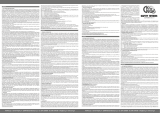 Kong Elastic Tether Double Manual de usuario
Kong Elastic Tether Double Manual de usuario
-
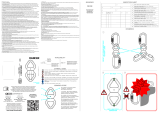 Kong Dancer Manual de usuario
Kong Dancer Manual de usuario
-
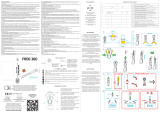 Kong Frog 360 Manual de usuario
Kong Frog 360 Manual de usuario
-
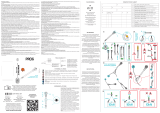 Kong PROG Manual de usuario
Kong PROG Manual de usuario
-
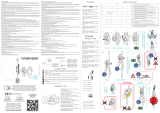 Kong Futura Body Manual de usuario
Kong Futura Body Manual de usuario
-
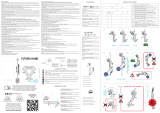 Kong Futura Hand Manual de usuario
Kong Futura Hand Manual de usuario
-
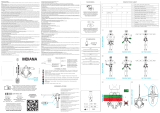 Kong Indiana Manual de usuario
Kong Indiana Manual de usuario
-
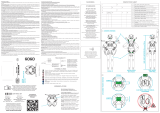 Kong Gogo Manual de usuario
Kong Gogo Manual de usuario
-
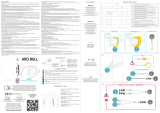 Kong Aro Bull Manual de usuario
Kong Aro Bull Manual de usuario
-
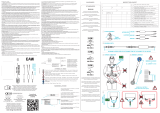 Kong Eaw Base Manual de usuario
Kong Eaw Base Manual de usuario











